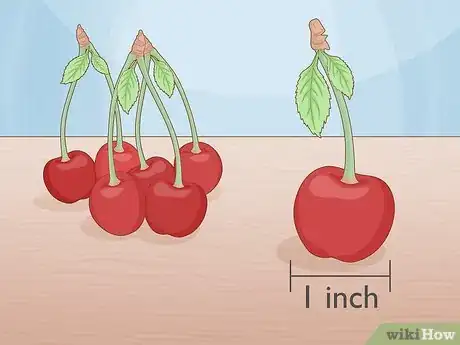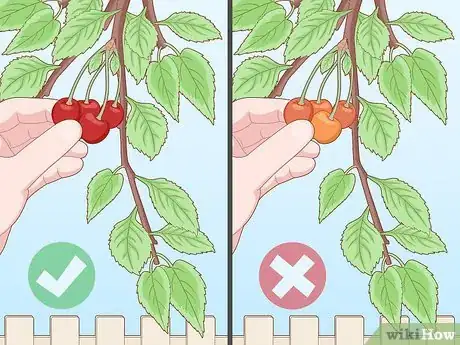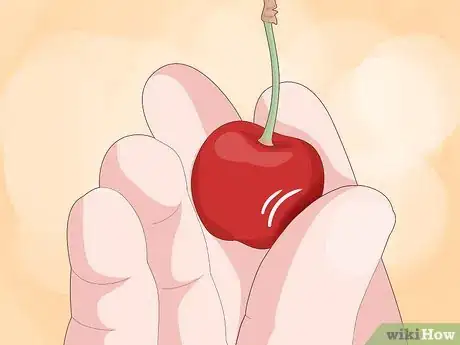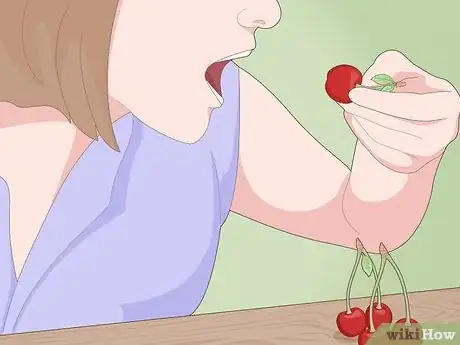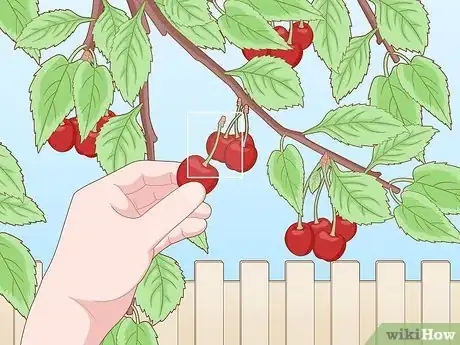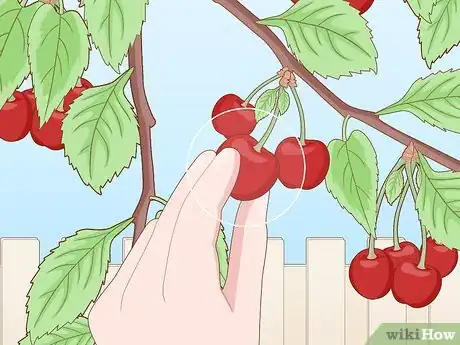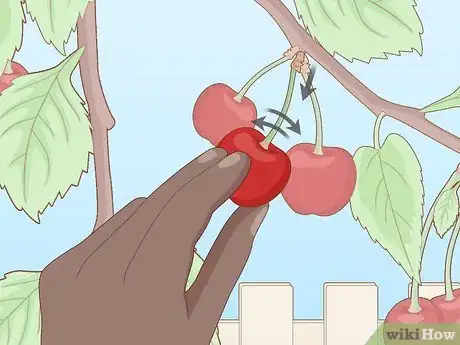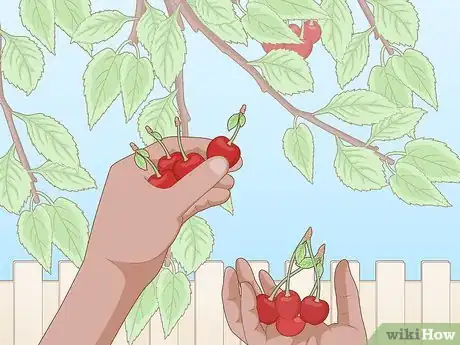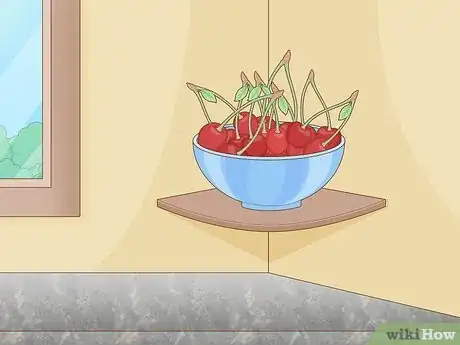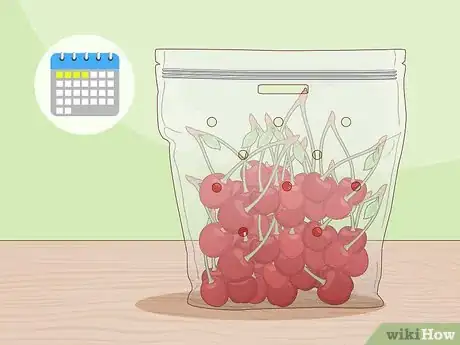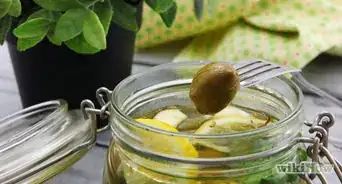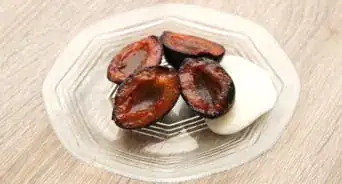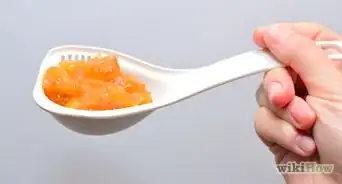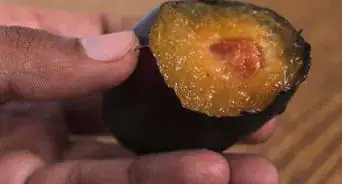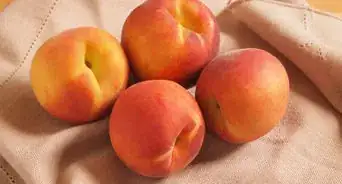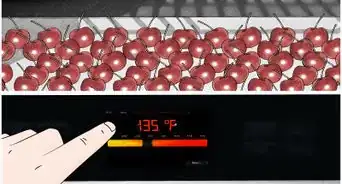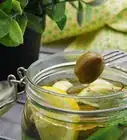This article was co-authored by wikiHow staff writer, Hannah Madden. Hannah Madden is a writer, editor, and artist currently living in Portland, Oregon. In 2018, she graduated from Portland State University with a B.S. in Environmental Studies. Hannah enjoys writing articles about conservation, sustainability, and eco-friendly products. When she isn’t writing, you can find Hannah working on hand embroidery projects and listening to music.
This article has been viewed 13,990 times.
Learn more...
Cherries are a delicious fruit that can be used to make jams, pies, or even be eaten on their own. Early summer time is usually when cherries are ripe enough to enjoy. Whether you are gathering some from an orchard, a farm, or you own backyard, you can gently grab your cherries and collect them in containers to enjoy these sweet fruits in no time.
Steps
Recognizing Ripe Cherries
-
1Look for cherries about the size of a quarter. Cherries will be ripe when they are about the size of a quarter. Some cherry varieties will get bigger than this, but most common cherries will stay in the range of 1 inch (2.5 cm) around. Small cherries will usually not be ripe yet.[1]
- Cherries do not get more ripe after they are picked, like some other fruits, so you have to pick them only when they are ripe.
-
2Choose cherries that have a full, rich color. The deeper the color on a cherry, the more ripe and ready to eat it will be. Cherries that are more orange are usually not ripe enough to pick. The cherries should be either a bright red or a dark red that is almost purple, depending on what kind they are.[2]
- Different cherry varieties will become different colors when they are ripe, so try to find out which kind you are picking beforehand.
- If you are picking cherries on someone else’s property or on a farm, you can ask the owner about which cherries are ripe as well.
Advertisement -
3Squeeze the cherries gently to check for firmness. Cherries that are ripe will feel firm and not squishy. Gently squeeze the cherries between two fingers to feel that they are firm and that the skin does not break easily. If they are firm, they are ripe enough to pick.[3]
-
4Taste the cherries to check for a ripe flavor. Before picking a lot of cherries, taste one to see if it is ripe. Depending on what type of cherry you are picking, the flavor will either be sweet and tasty on its own, or it will be sour and tart and might taste good with some sugar. Try to figure out what type of cherry you are picking before tasting them so that you know what to look for.[4]
-
5See if the stems stay on while picking. Depending on what you are planning to do with your cherries, you can choose to pick sweet ones, which are better for eating directly, or tart ones, that are better for baking in pies and making jams with. Sweet cherries will usually keep their stems attached when they are picked, while tart cherries will fall off of the stem more easily.[5]
- If you are picking your cherries on a farm, they will usually be able to tell you which types of cherries are where.
Pulling Ripe Cherries off the Tree
-
1Part the leaves of the tree to check for hidden fruit. Cherry trees often have large leaves, and the fruit might be covered up by branches or twigs, too. If you see a cherry tree that doesn’t seem to have many cherries on it, try gently moving the leaves around to find ones that may be hidden behind the canopy.[6]
-
2Grab the cherry between your first 2 fingers and your thumb. Cherries are usually small enough to be grabbed with only a couple of fingers. Use your thumb, your pointer finger, and your middle finger to gently grab the cherry in your hand. Don’t grab it too hard, or you might damage the fruit.[7]
- If the cherry tree is especially tall, you may need to stand on a ladder or step stool to reach the fruit. Always use caution and be aware of other people around you.
-
3Tug gently to pull the cherry off with the stem still attached. Most cherries will keep their stem when you pick them. Cherries stay fresh for longer if their stem is still attached, so try to leave the stem on as many as you can.
- If the stem does come off and the cherry is ripe, that’s okay! Just try to eat the stemless cherries first, because they’ll probably go bad quicker.
-
4Pick cherries with both hands until you are holding 4 in each hand. Cherries are small, so you can grab a few at a time. Picking will go faster if you use both of your hands. Try not to squish any of the cherries or mark up their skin.
- If your hands are smaller or the cherries particularly big, you can hold less in each hand.
-
5Place the cherries in a container in the shade. You can use a basket, a bowl, or a plastic container to hold your cherries. Carefully place your handfuls of cherries in the container as you pick them. Don’t squish the fruit or try to pack them down, as this could damage your cherries. Once the cherries are in your container, move them out of the sunlight so that they stay fresh for longer.[8]
- You might need to use multiple containers if you are picking a lot of cherries.
- You can buy cheap baskets to hold your cherries at most home goods stores.
-
6Store your cherries in a perforated plastic bag in the fridge. If you aren’t going to eat your cherries right away, you can put them in a plastic bag with small holes throughout it and keep them in the fridge. The holes in the plastic bag keeps air flowing onto the cherries, while still keeping their skin protected. Put your cherries in the fridge as soon as you can to preserve their freshness. Try to use them within 2 to 4 days after you pick them.[9]
- Don’t wash your cherries until you are ready to use them. This will keep them fresh for longer.
- Leave the stems on when storing your cherries. The stems help keep the cherries fresh.
Things You’ll Need
- Containers (bowl, basket, or bag)
- Perforated plastic bag
- Step ladder (optional)
References
- ↑ https://pickyourown.org/cherrypickingtips.htm
- ↑ https://www.youtube.com/watch?v=MIpalgoVi4U&feature=youtu.be&t=63
- ↑ https://www.youtube.com/watch?v=eYwf6VnemsQ&feature=youtu.be&t=75
- ↑ https://pickyourown.org/cherrypickingtips.htm
- ↑ https://pickyourown.org/cherrypickingtips.htm
- ↑ https://www.510families.com/cherry-picking/
- ↑ https://pickyourown.org/cherrypickingtips.htm
- ↑ https://www.epicurious.com/ingredients/how-to-buy-and-store-cherries-cherry-varieties-recipes-article
- ↑ https://pickyourown.org/cherrypickingtips.htm
